Ancient History
From out of the Steppes, a ‘Whirlwind of Nations’
In the sixth instalment of ‘The So-Called Dark Ages,’ Herbert Bushman describes the rise of the Huns, who struck terror into the hearts of Goths and Romans alike.
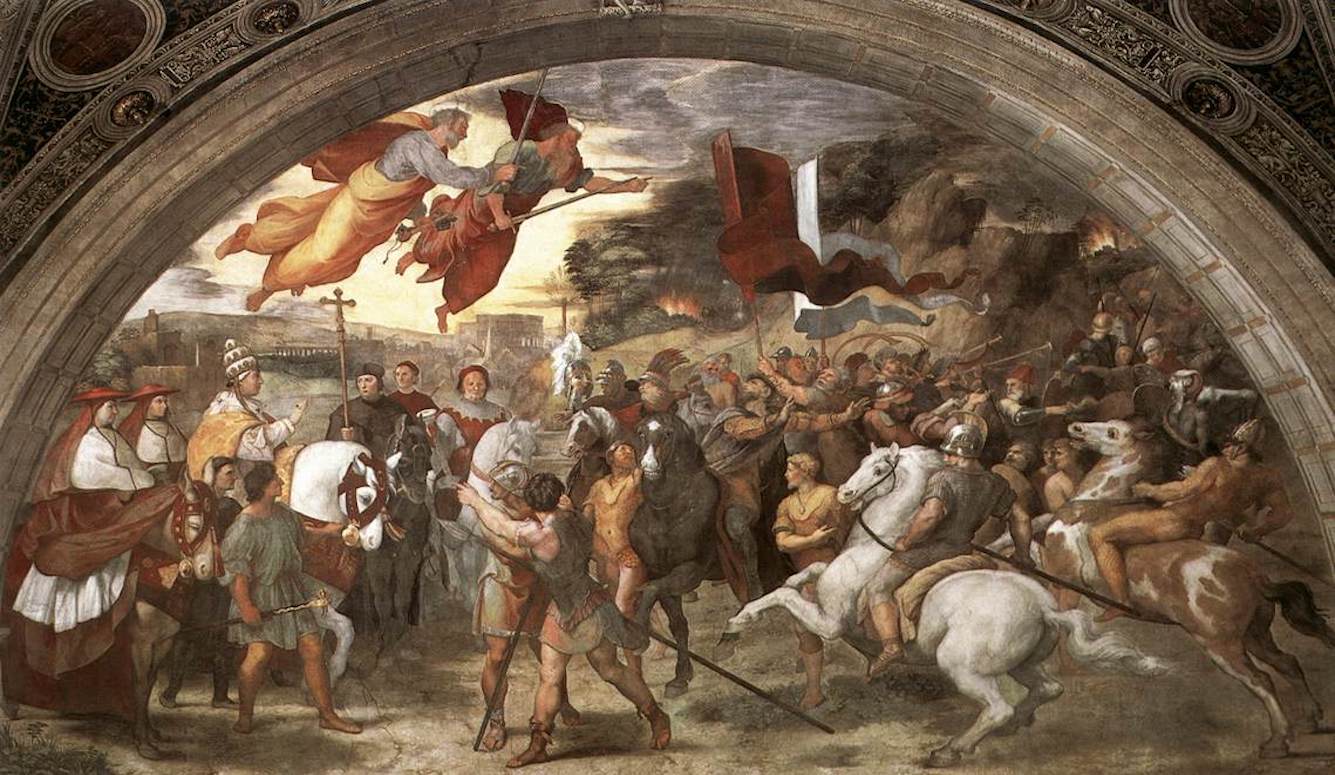
The article that follows forms part of The So-Called Dark Ages, a serialized Quillette history of Late Antiquity, adapted from Herbert Bushman’s ongoing Dark Ages podcast. This instalment is the first dedicated to the Huns. For previous instalments, tracing the history of the Goths, click here.
“Filimer, King of the Goths…found among his people certain witches…He expelled them from the midst of his people and compelled them to wander in exile far from his army. There, the unclean spirits who beheld them…bestowed their embraces upon them and begat this savage race—a stunted, foul, and puny tribe, scarcely human and having no language save one that bore only slight resemblance to human speech.”
That is the origin story for the Huns, as provided by Jordanes, a sixth-century Roman historian believed to be of Gothic descent. Needless to say, it tells us nothing particularly useful, in a historical sense. But it does convey something about the way the Huns were perceived by Europeans in the fourth century C.E.—even 150 years later, at the time Jordanes was writing.
In almost all the classical sources, the peoples of northern Europe are described as physically attractive. Gauls, Goths, Alemanni, Belgians, and Saxons may have been uncouth and violent in Roman eyes, but they were also seen as handsome specimens who fought fiercely—and whose defeat at the hands of the legions was therefore an outcome to be at least slightly regretted. There’s a statue called Dying Gaul in Rome’s Capitoline Museum that depicts a mortally wounded Celtic warrior. His hair is wild, but his face is noble and his body every bit as perfect as any of his (idealized) Greek or Latin counterparts.
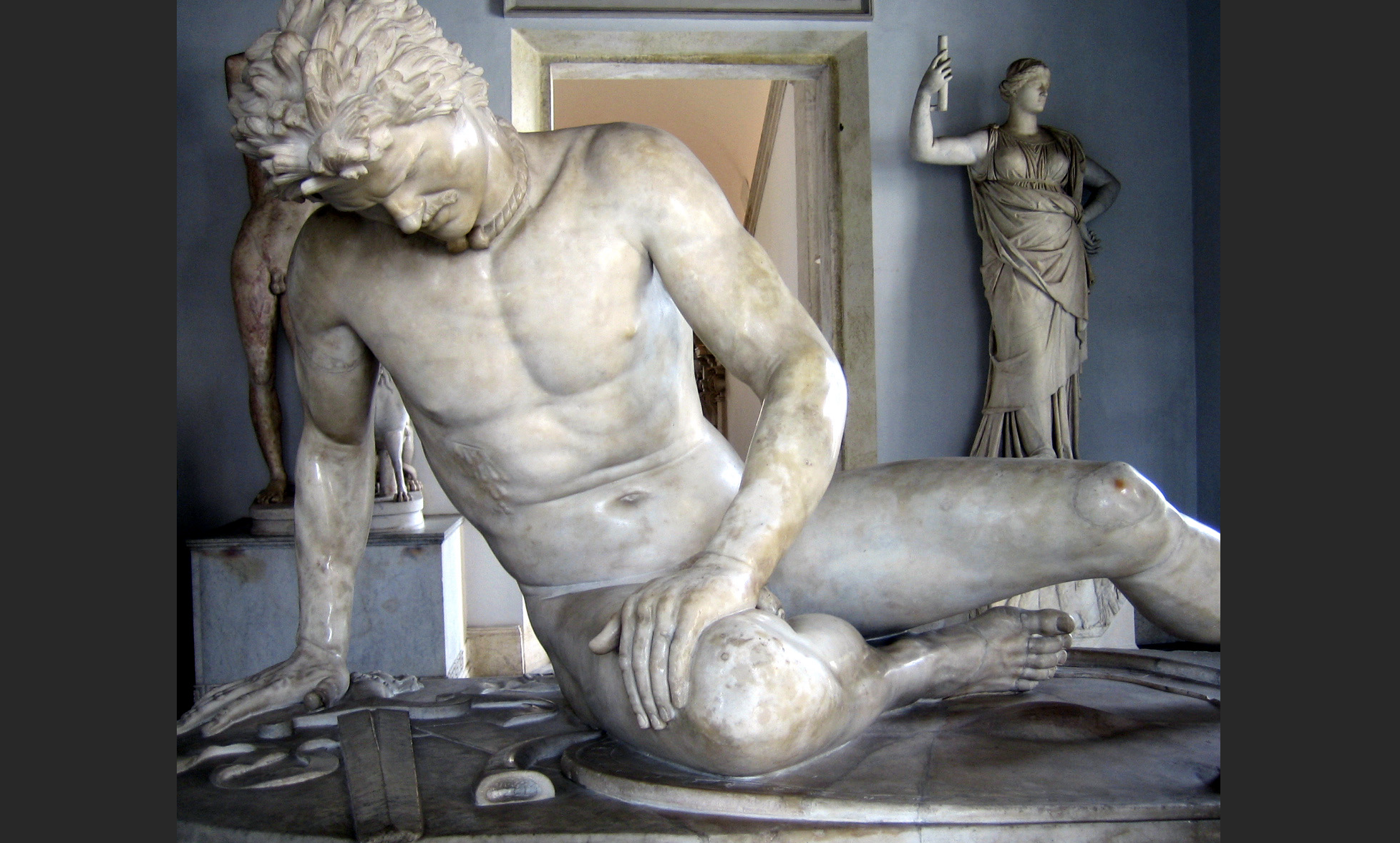
The Huns get a different kind of treatment. The sources are relentless about their supposed ugliness. Their language is described as an assault on the ears, their bodies as short and squat.
By the time the Roman Empire first encountered the Huns in the late fourth century C.E., it was a cosmopolitan place, with dozens of ethnicities represented within it. Racism, as we now understand it, based on physical traits, was largely unknown. Learned men wondered why people from Africa had darker skin, while the peoples of the north had lighter skin, but these traits had no bearing on those people’s values. The difference between a Roman and a “barbarian” (such as all non-Romans were described) was revealed by behavior, they believed, not appearance.
More than most of the other outsiders whom the Romans had regularly encountered, the Huns were very much un-Roman. Jordanes relays that the Huns “displayed…deeply cut faces,” which may suggest some kind of ritual scarification, something that was completely beyond Roman norms. Archaeology makes clear that at least some Huns practiced head binding—the deliberate manipulation of the growth of children’s skulls in order to make their heads elongated and higher crowned than they would normally be. The Huns’ partners on the Eurasian Steppe, the Alans, also bound their infants’ heads. The practice pops up all around the world at various times and places, but would have been mostly unknown to the Romans. Appearing suddenly out of the east, with their scarred faces and oddly shaped heads, these militarily invincible Huns must have seemed to the Romans as a kind of dark supernatural force, rather than yet another border tribe looking for land and plunder.
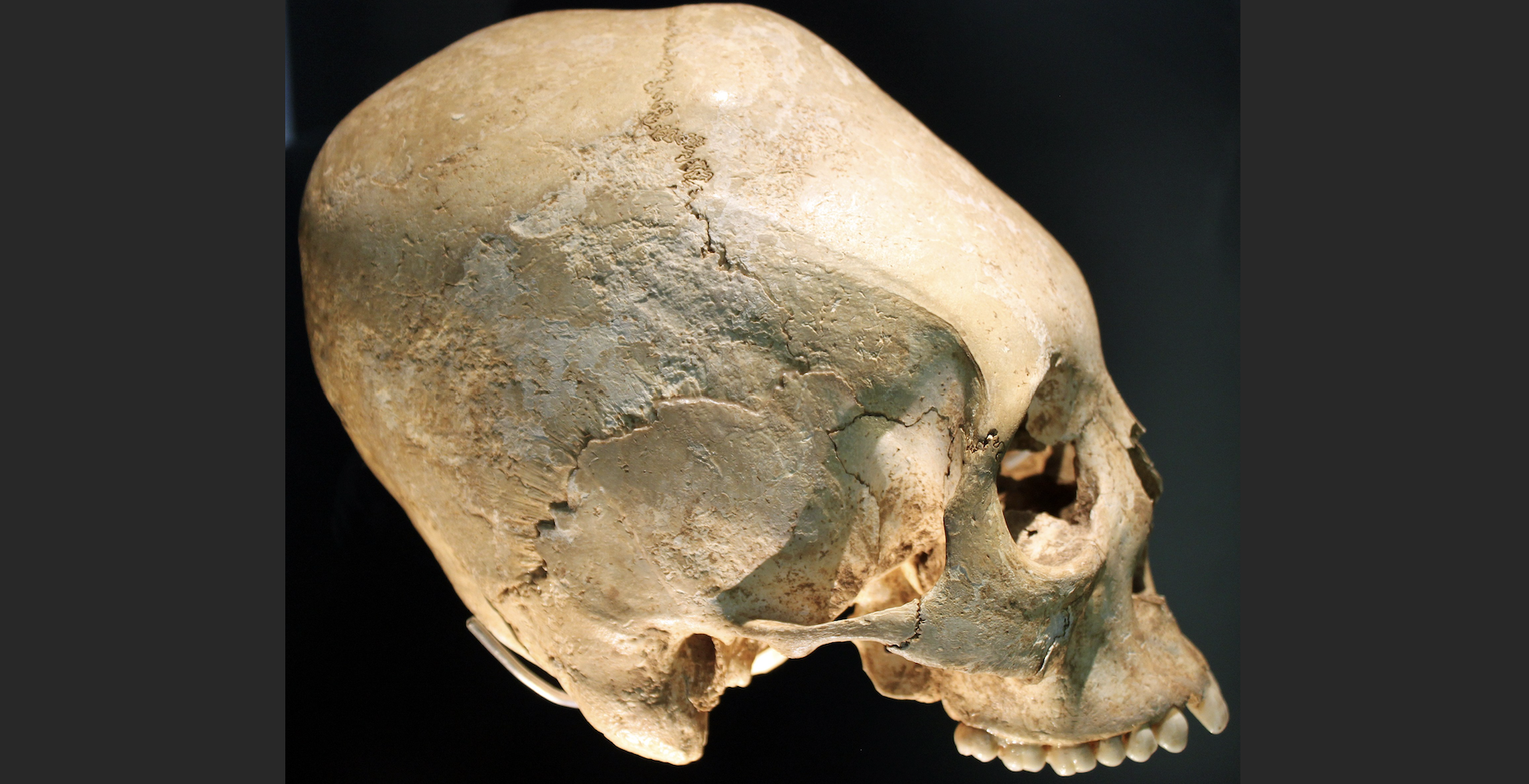
Jordanes tells us that the Huns originated somewhere east of the Maeotian Swamp, meaning east of the Sea of Azov, which sits off Ukraine’s southeast coast. Given that the Asian land mass extends east for another 7,000 kilometers or so from this point, that does not exactly narrow things down. But the general consensus among modern scholars is that just before they made themselves known to the Goths, the Huns inhabited the Kuban River basin, in what is now Russia, at the northern feet of the Caucasus—though they originated further east, in central Asia.
We know that the Huns were primarily horse-mounted archers, as had been, and would continue to be, fairly standard for people of the Steppe (a term used to describe the vast swathe of grasslands, savannas, and shrublands stretching from eastern Europe through southern Russia and into Kazakhstan, Mongolia, and China).
They were pastoralists—at least when they first appeared on the Roman radar—who depended on livestock and hunting for sustenance, while showing no talent for, or interest in, agricultural pursuits. There’s a famous description of Attila that might help us picture them: “He was short of stature with a broad face and a large head; his eyes were small, his beard thin and sprinkled with gray, and he had a flat nose and a swarthy complexion, showing the evidence of his ancestry.” That sounds like it may be describing a person of mostly East Asian origin, but then again, it might not. Given the enormous role that Huns played on the world stage during the fourth and fifth centuries, we really know very little about them.
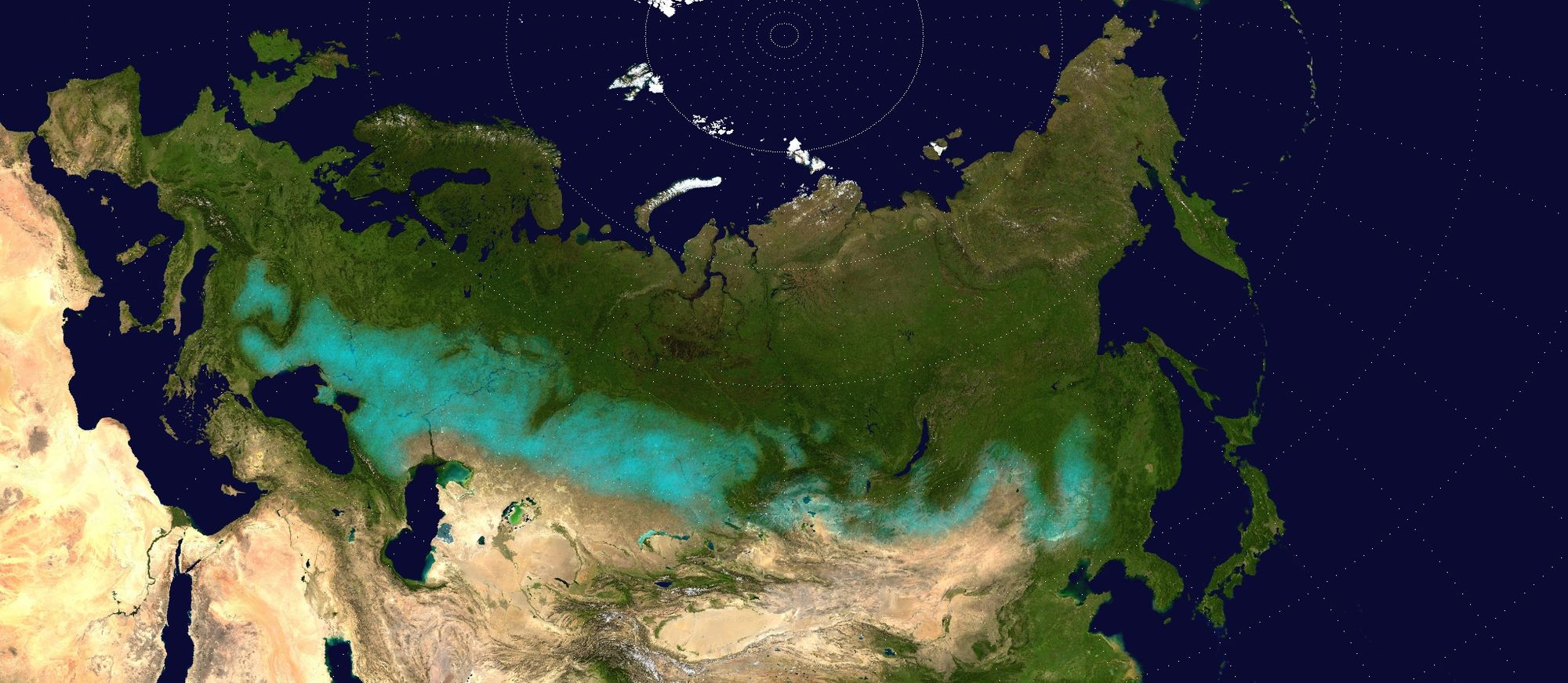
Usually, linguistics can give us a general idea about the movements of, and relationships between, ancient migrating peoples. But in the case of the Huns, language isn’t much help because the total number of Hunnic words we know for certain is exactly…one. Strava. It means “funeral.”
And even in the case of that one word, linguists struggle to slide it definitively into a family tree. Plenty of guesses have been made with varying degrees of confidence. It could be Iranian, Turkic, Mongol, Siberian, or none of the above. The word Hun itself might not even be a Hunnic word, but rather a Persian word meaning “enemy,” which the Huns co-opted as a means of intimidation.
One controversial idea that’s come up repeatedly is that the Huns are descended from a group of people that had once harassed Chinese dynastic powers—nomads known to Chinese historians under the derisive name of Xiongnu (匈奴, literally “fierce slave”). The theory goes that after sparring with Chinese Emperors from the third century B.C.E. to the late first century C.E., the Xiongnu found their way west, across the Kazakh steppes, and from there into the lands of the Goths and Romans.
At first blush, this seems far-fetched. Several centuries passed between the disappearance of the Xiongnu from China and the appearance of the people known as the Huns. What would they have been doing in the meantime? Is it reasonable to expect that a group could maintain its cultural cohesion for such an extended period? And are we even sure that we’re talking about a single ethnic group rather than a loose conglomeration of tribal entities? (The answer to that last question is no, in the case of both the Huns and Xiongnu.)
Over the last fifty years or so, the Xiongnu theory of Hun origins has been steadily falling from favor among academics. Recent archaeological and genetic observations, however, may serve to inject a little life back into this theory. Burials connected to the Xiongnu suggest that they were a fairly heterogenous mixture of Siberian, Mongol, and Caucasian groups. Hunnic burials show similar characteristics. Some archaeologists have pointed to cauldron-like vessels found at Xiongnu burial sites, and similar (though not identical) items found at Hunnic sites. But specialists are still having fierce arguments about the strength of this evidence, and there is nothing resembling consensus as to what it all signifies.

Procopius of Caesarea and Evagrius Ponticus (also known as Evagrius the Solitary), both historians writing around the middle of the sixth century C.E., promoted the theory that the Huns originated with the Massagetae, an Iranian people who occupied territories east of the Caspian sea, in and around modern Turkmenistan. The Massagetae had been known to the classical Greeks, and were infamous in Persian history, especially for defeating and killing Cyrus the Great under their queen Tomyris in 530 B.C.E.
There are two problems with this theory, however. First, the time gap between the Massagetae’s recorded turn on the historical stage and that of the Huns is even wider than that involving the Xiongnu. The second problem is that ancient historians had a maddening habit of using the same names for different cultures across time, based on their geographic location. For example, the term “Scythian” was often used in Roman times to refer to any groups inhabiting Scythia, regardless of language or culture. The Goths were called Scythians until they were driven out by the Huns, and then the Huns became the (new) Scythians. The Huns certainly bore no relation to the Scythians whom the Greeks had described in earlier works, yet were painted with that brush anyway. All fo which to say that both Procopius and Evagrius may have connected the Huns to the Massagetae for no other reason than that both groups came from that neck of the woods, and were well known to them because of the Persian connection.
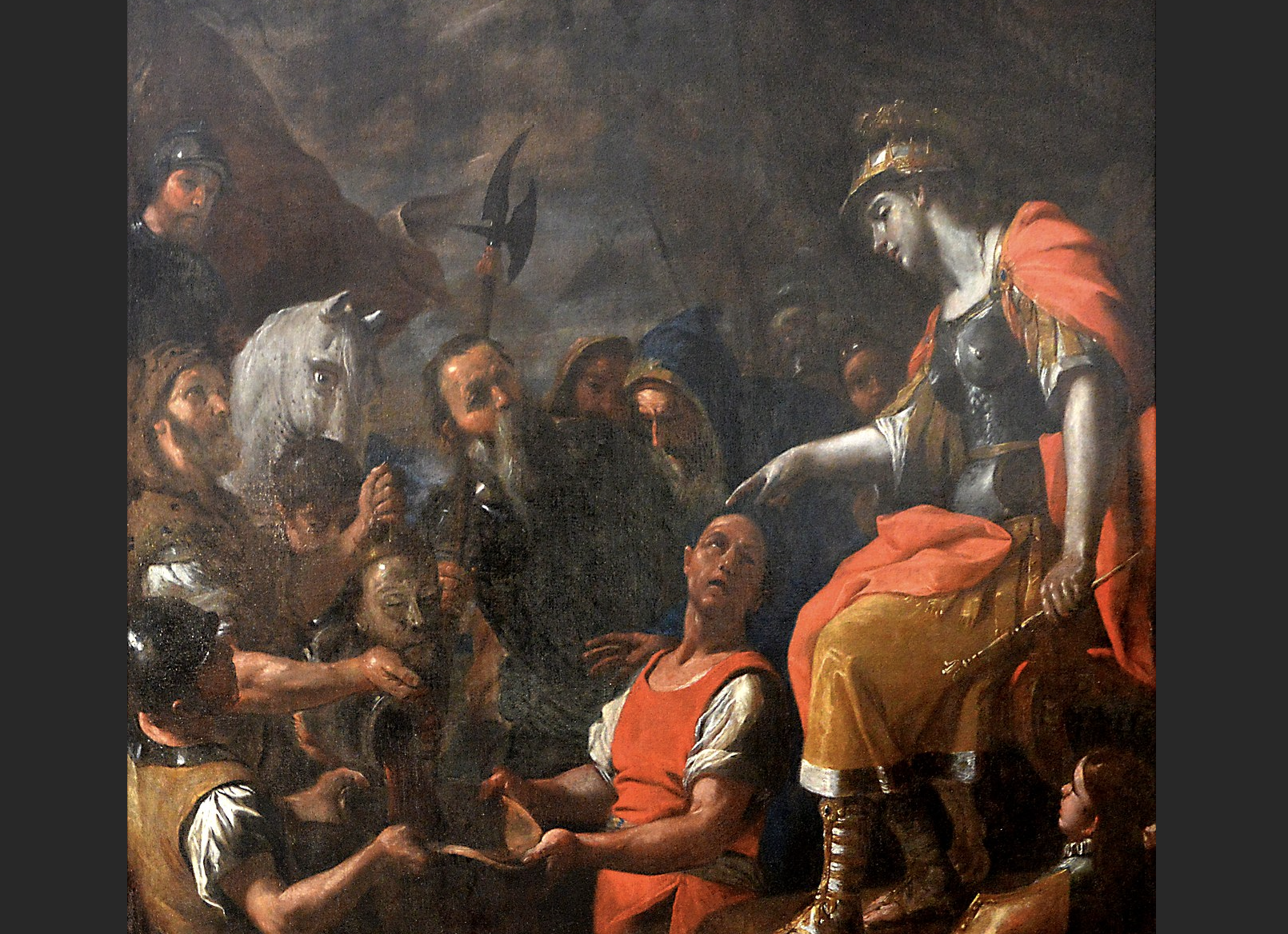
At this point, alert readers will note that the 1,500 words I’ve dedicated this far to the Huns’ origins really could have been replaced by an exasperated shrug without much loss of confirmed information. So let’s get on with the far better-known story of what happened once these horse-mounted nomads migrated into the Roman sphere.
The first news the Romans had of the Huns reached the Danube border garrisons sometime in the 370s C.E. Something violent was happening on the eastern edge of the Gothic territories, it was learned. Specifically, the Huns had begun to assault the Greuthungi, the eastern Goths then led by a king called Ermanaric (whose story you will remember from our instalment titled, Huns to the North. Romans to the South).
As the story goes, Ermanaric had ordered the execution of a woman named Sunilda, apparently in place of her husband, who’d rebelled against the king and then fled. Her brothers took umbrage, as one does when one’s sister has been torn apart by horses, and took their revenge by stabbing Ermanaric. The wound was not immediately fatal, but the debilitated king was unprepared for the rigors of war with the Huns. (Ermanaric probably did exist as a real historical figure, as he appears in the accounts of both Jordanes and a fourth-century Roman historian named Ammianus Marcellinus. But the details of his story—including his death at the claimed age of 110—have to be taken well-seasoned.)
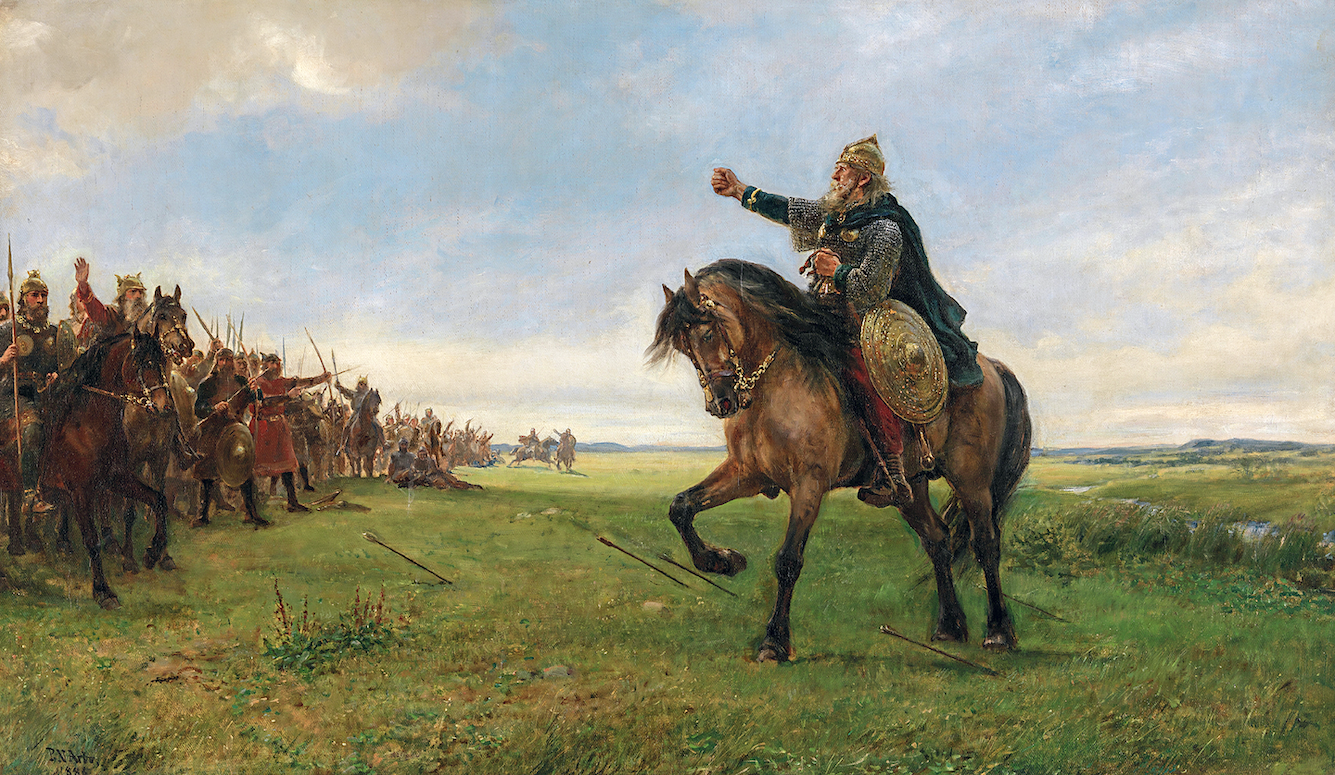
Hermanaric’s opposite number among the Huns is named only by Jordanes, who writes of a chieftain named Balamber as “king of the Huns.” Given what we know about Hunnic social structure—something we will get to later on—that title is almost certainly overstated, as the idea of a single Hunnic king hadn’t yet developed. Balamber was either presented by Jordanes as a mash-up of several leaders, the only Hunnic leader whose name Jordanes had heard, or a complete fabrication. It doesn’t matter much: Whoever happened to be leading the Huns at the time, the Huns’ defeat of the Grethungi was swift and crushing.
Some Goths fled westward to seek refuge with kin, while others came under the Huns’ control, and were put to work. Indeed, it wouldn’t be long before Gothic names began appearing in lists of Hun military leaders. The Huns quickly extended their control westward to the Dniester River—which runs through modern Ukraine and Moldova—and into the territory of Athanaric, the Visigothic king who preceded the famed Alaric. (This gets us into events discussed at the beginning of the Gothic arc of this series, and so these names should sound familiar.)
At first, the Romans dismissed such frontier reports as irrelevant to their interests, which wasn’t an unreasonable response at the time. Barbarians were always fighting each other. Indeed, Roman foreign policy depended on such conflicts, and encouraged them. Bickering barbarians were easier to manage than the united variety. Moreover, communications being what they were, most intra-barbarian wars were over long before news of them reached the Roman frontiers; and so, for all the Romans knew, the Hunnic wave had already come and gone.
As readers may remember, Athanaric did his best to defend his besieged Visigoths from the Huns. But he failed. His rival Fritigern took over, and led survivors to the Danube. We talked at length about what happened next in previous instalments, and so I won’t repeat it here.
But the question remains: Why was this all happening? Why were the Huns pushing west in the first place? There are a few possibilities.
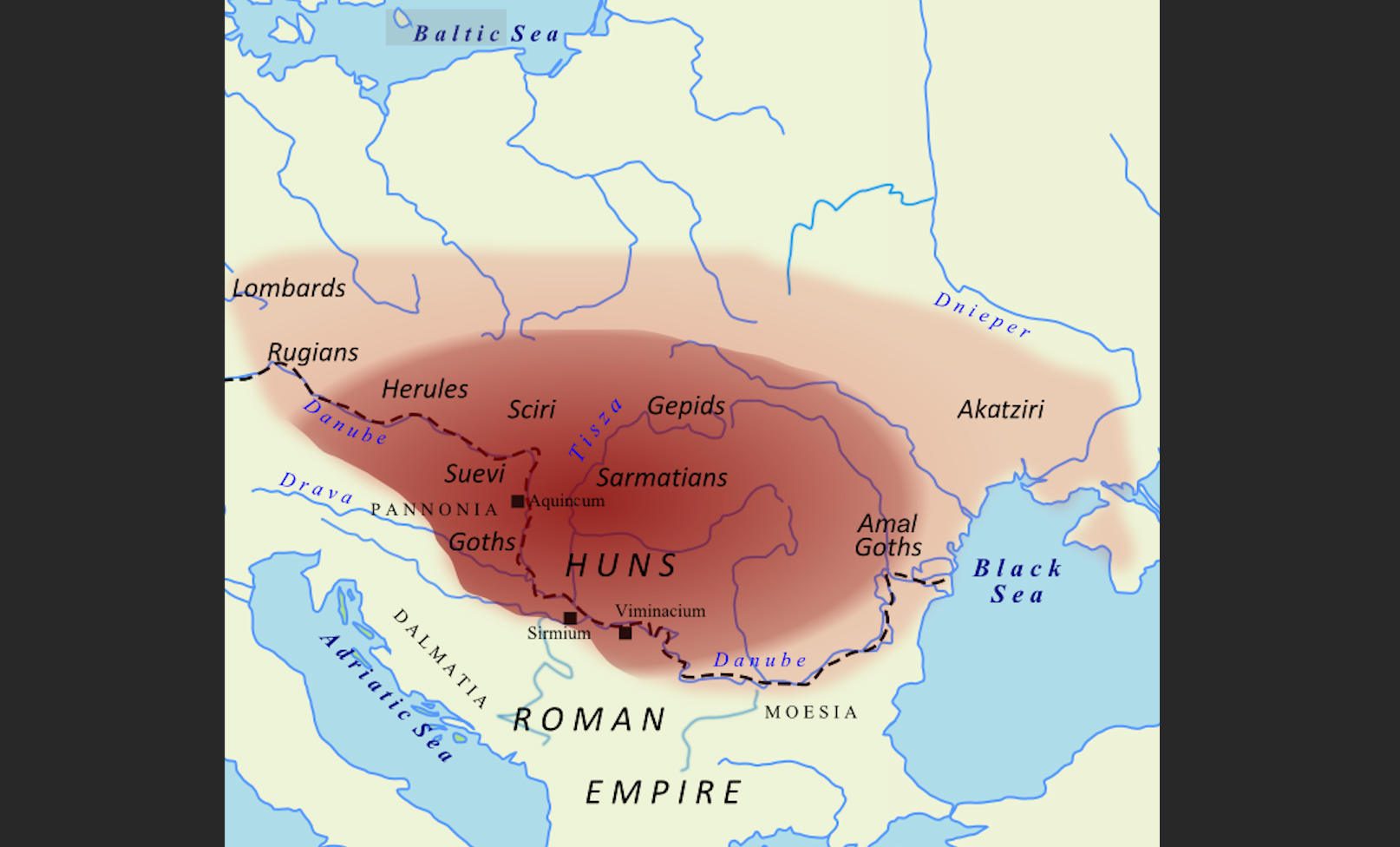
One explanation is climate change. If we accept that the Huns were similar to other pastoral peoples of central Asia, they would follow well-established seasonal rhythms in moving their flocks. Climactic changes that disrupted those rhythms may have pushed them to seek out (literally) greener pastures. Unfortunately, this theory is difficult to prove or disprove, since detailed weather data for fourth-century Uzbekistan is hard to come by.
A second possibility is that the Huns themselves were being pressured from other peoples further east. The Huns are often described as the first of a series of dominoes that lurched westward, pushing other groups that eventually went on to overwhelm the Roman Empire. But what if there was another domino that set the Huns in motion?
It’s an intriguing thought. But it seems farfetched, as the Huns were really really good at waging war. And so it’s hard to imagine what a (presumably even more war-like) people capable of driving the Huns off their original lands would have looked like.
(It should be noted that a fragmentary history provided by Priscus of Panium, a fifth-century Eastern Roman writer who once actually visited the Huns as part of a diplomatic mission from Byzantium, related a supernatural version of the domino theory of Hun migration. By this account, the original force that put the fright into the Huns wasn’t a race of humans, but rather a brood of griffins hell bent on devouring every human in the world.)
By one mystical account, the original force that set the Huns moving east was a brood of griffins hell bent on devouring every human in the world.
The third possibility (not involving griffins), and the one that strikes me as most likely, is that the Huns were attracted westward by the material wealth that the Goths had been accumulating thanks to their ongoing interactions with the Romans.
By the 360s and 370s C.E., news of that wealth might have made it out to the furthest eastern reaches of Gothia. For those interested, I’ve posted a picture to the Dark Ages Podcast Instagram account of an ornate golden patera, or ritual dish, that was found in Romania, and is believed to have been part of a fourth-century Gothic hoard. The wealth of the Goths was not on a par with the Roman Empire, but as such surviving treasures help show, it would have been enough to attract the attention of others.

Eventually, the neighbors, among them the Huns, decided to take some of that wealth for themselves. And as their raiding and conquering moved closer to the Danube, the richness of the spoils increased, drawing the horse-mounted interlopers ever forward. This explanation tracks too, in a metaphorical way at least, with the story given by Priscus that Hun hunters (by now, safe from the clutches of griffins) followed a divine doe across the Maeotian Swamp, and then
the unknown land of Scythia disclosed itself to them, and the doe disappeared…The Huns, who had been wholly ignorant that there was another world beyond Maeotis, were now filled with admiration for the Scythian land…Like a whirlwind of nations, they swept across the great swamp.
At the time the Huns first reached the Danube frontier, however, they did not yet constitute a single political entity. The shape of early Hun society is difficult to see from this distance. But it seems that at this stage, the Hunnic horde was organized in similar fashion to a lot of Germanic groups—a loose confederation of highly independent tribes. These tribes worked in concert as far as was beneficial, but were just as likely to compete as to co-operate. This state of affairs led to a large number of free actors roaming around, both in and outside of Hunnic-controlled territories, as demonstrated by the presence of at least a few Hun units fighting against the Romans at the battle of Adrianople in 378 C.E. on the Gothic side.
The loosely organized Hunnic confederation, such as it was, either recruited or enslaved—probably both—several other tribal groups in the region. Most of them were Germanic, including the defeated Greuthungi, but some were from further east—Iranian peoples who lived closer to the Caspian Sea. In surviving accounts of the post-Adrianople raids conducted by the Goths and their allies, sources mention Alans, Scirians, and Cappadocians as peoples who’d become subject to Hun domination (and Jordanes provided several other examples of groups that lived back in Scythia).
Aside from small bands that joined in raiding, or that appeared alongside other tribes operating far afield, the main body of the Huns stayed on the north side of the Danube during the latter part of the fourth century C.E. And since these Huns constituted a pre-literate society that didn’t produce any historical literature, there’s a gap in our knowledge about what they were up to—though it’s reasonable to assume they were busily consolidating their power and making sure their new subjects were obeying the new order. The core Hun group would have needed these locals to work the land, since their farming and crafting labors were needed to keep the horde supplied (and it’s not as if the Huns were going to do it).
There’s a common misconception that attends the study of these large movements of “barbarian” peoples, whereby one is apt to picture a wave of people that washes over an area and sweeps away the old inhabitants completely. This is an understandable misconception because that’s the way the chroniclers of yore often presented things. These chroniclers, who tended to be members of the wealthy landowning set, exhibited a class-based bias—as their fellow landowners often really were swept away and replaced, even as common laborers remained in place. Moreover, their histories often were written with the secondary goal of demonstrating that these barbarian invasions were God’s punishment for the Empire’s various moral sins. Those two biases go a long way to explain the catastrophism exhibited by the writers of late antiquity.
I’m not saying that these events weren’t terrifying, or that thousands upon thousands of people weren’t robbed, raped, made homeless, and killed every time a region changed hands—all of that is true. What I’m saying is that the movements of peoples during this period can’t accurately be analogized to billiard balls knocking one another around (nor, for that matter, the aforementioned falling dominoes). These demographic movements were more like water overflowing from one bucket into another, which proved too small, and so the water overflowed into another bucket—and then another, and so on.
The Huns ravaged Moesia—the plain extending northward from the Balkan Mountains to the Danube—and pushed westward, returning home only when they could carry no more booty.
It was almost 20 years before the Huns made their presence known to the Empire again. The weather may have played a role in the timing, as the Danube froze during the winter of 394-95 C.E.. The Huns (being far more comfortable on horseback than on boats) took advantage by riding across in search of plunder. They ravaged Moesia—the plain extending northward from the Balkan Mountains to the Danube—and pushed westward, returning home only when they could carry no more booty.
You may remember that it was at this time, in the 390s, that Alaric raised his people in revolt, taking them down into Greece to face off against Rome’s legions. The Huns were the reason for this: The Moesian lands the Romans had given to the Goths weren’t safe, and Alaric was looking for a more secure corner of the Empire.
But as bad as things were in Moesia, this region wasn’t even the Huns’ main target at the time. Nearly simultaneously, large Hunnic armies poured over the Caucasus to the east, overran Armenia, and then plundered deep into Anatolia. Saint Jerome, who was then living in Bethlehem, and so had access to fresh news of these raids, wrote as follows:
Behold, the wolves, not of Arabia, but of the North, were let loose upon us…from the far-off rocks of Caucasus, and in a little while overran the great provinces. How many monasteries were captured, how many streams reddened by human blood? Antioch was besieged…Flocks of captives dragged away...They filled the whole earth with slaughter and panic…The Roman Army was away in Italy and detained in…the Civil Wars. May Jesus avert such beasts from the Roman World in the future!
As Jerome reported, the Huns penetrated all the way to the great provincial capitol of Antioch, which they unsuccessfully besieged. They were finally defeated in 398 C.E. by the eunuch general Eutropius (a man otherwise known for cruelty and greed, whom we met briefly in a previous instalment).
As the fourth century came to a close, the Huns were undisputed masters of the Pontic Steppe, from the Carpathians in the west to beyond the furthest eastern edges of the Black Sea. But they weren’t yet united. No surviving source names any single Hunnic leader overseeing any of these raids against Roman territory. The original model of fluid confederation remained in place, with tribes or clans forming and breaking alliances as was expedient.
I’ll finish with some notes on Hunnic society, which are heavily informed by the book The Huns by Irish-born British historian E.A. Thompson (1914-1994).
I’d already mentioned that the Huns depended on herded animals for their livelihood. Roman commentators note that Hunnic herds included just about every kind of domesticable mammal—horses, cattle, goats, and sheep—in vast numbers. Their clothing, we are told, was made from skins and linen, and worn until it disintegrated. That detail about linen is important, because at no point in their history did the Huns settle down to become farmers; and without farms, there is no flax, and without flax, there is no linen. So we can conclude that, from early days, the Huns were engaged in trade with their more settled neighbors.
This is a pattern we’ll see over and over again—nomadic cultures alternating between predatory and commercial relationships in order to acquire the things they need to survive. To maintain the viability of their own way of life, the Huns needed their land-rooted neighbors to maintain theirs as well.
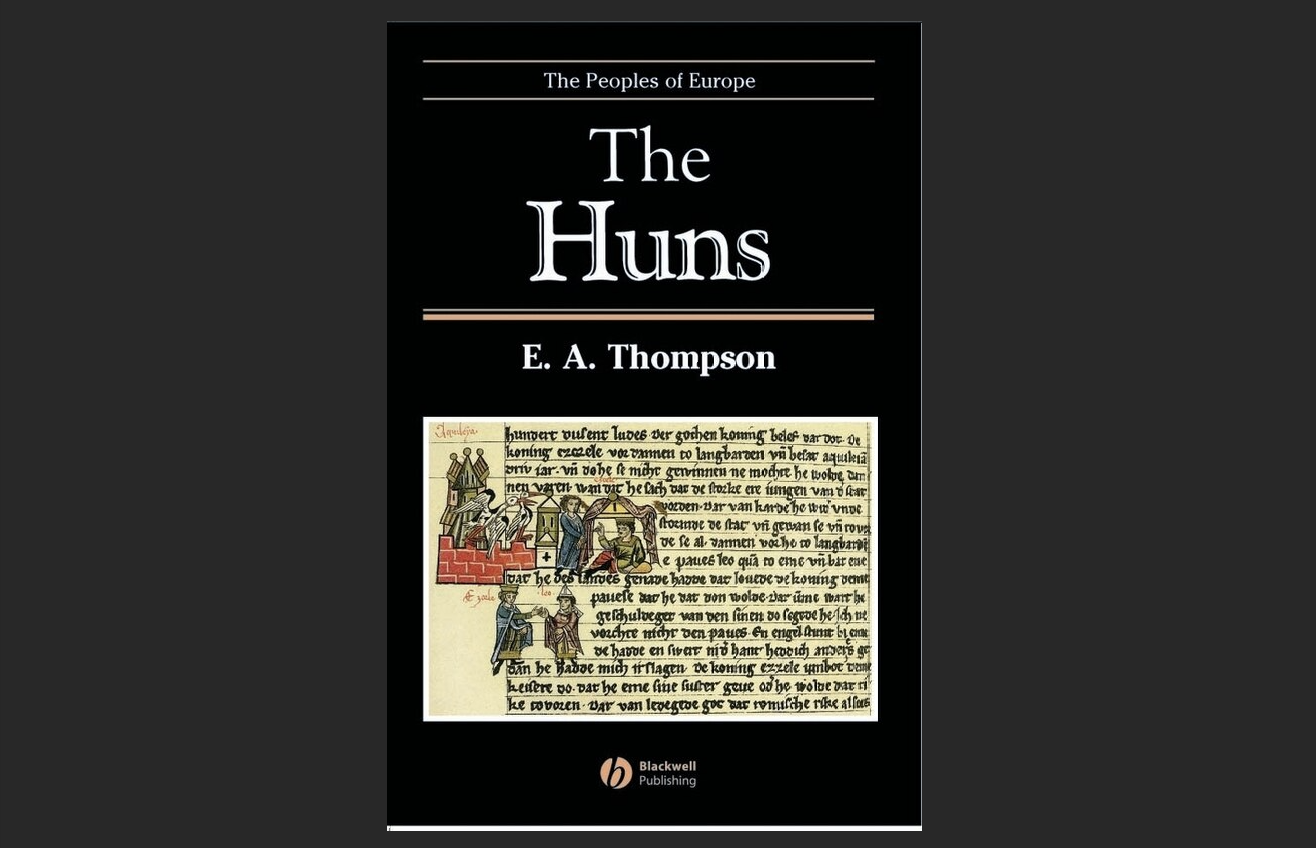
The word “horde,” which I’ve already used several times in relation to the Huns, evokes a vast mass of people all moving together. I see in my mind’s eye a sea of tents with hundreds or thousands of individuals—men, women, and children—milling among them, along with huge herds of animals stretching to the horizon. Everything is partially obscured by the dust kicked up by thousands of feet. But such a scene, of an entire nation gathered and moving as one, is ahistorical. Keeping thousands of grazing animals together in a single huge herd would not only be a managerial nightmare, but would also immediately outstrip the fodder that the land could provide.
Dr. Thompson calculated that the number of fighting men a Hunnic tribe could put in the field at any one time was probably only about 1,200. These groups of fighters could band together to form larger armies, but only on a short-term basis. When not gathered for war, Huns would have moved in smaller, independent groups, taking their animals from pasture to pasture.
This would have been a precarious lifestyle, as the quality of the grass might vary widely from year to year. Even in good years, herdsmen (and women) would have had to spend days on end in the saddle. Based on our sources, in fact, it seems the Huns were almost glued to their horses, surprising Roman visitors by eating, drinking, and holding high-level meetings while mounted. The vast superiority of the Hun cavalry emerged from this reality of daily life; as none of their western adversaries spent nearly so much time riding.
Way back in my first instalment on the Goths, I wrote that the Greuthungi, though excellent horsemen, were not “a horse people like the Huns”—a distinction I promised to explain in a future chapter. Well, this is what I meant: The Goths could not compete with the Huns when it came to horse-mounted battle, distracted as they were from their equestrianism by the realities of a settled, agrarian life.
As Thompson noted, the same was true of the Romans: Even the best-trained cavalryman of the Empire had to be made, while Hun cavalrymen were, in effect, born.
Much of the Hunnic advantage depended on speed, so armament was on the light side. Their fighters often carried shields; and, as their contact with the empire grew, they adopted those parts of Roman defensive armor that they could get their hands on and which were compatible with their tactics. But mostly, a Hun’s greatest protection lay with the maneuverability of his horse.
In close combat, the sword was used, often in tandem with an entangling lasso or net. Some examples of these swords have been found in burials from the period. They’re straight, rather than the curved sabres associated with later cavalry, and not particularly distinctive or particularly high in quality. The type of metalworking that yields fine metal weapons in bulk is impossible within a nomadic society, so most or all of these swords would have been acquired through plunder or trade.

The star of the show, though, was the bow. It was a shockingly powerful weapon, used with unsurpassed skill to devastating effect. Unlike a sword, a bow could be made from materials that were easily available to pastoralists on the Steppe. The bows used on the Steppe tended to be of compact size, constructed from laminated wood and bone, and held together with bone glue and reinforced with stays—also made of bone—near the center grip. Sinew provided the string, and animal grease kept the whole thing limber.
Whether the Huns had developed some specific improvement on the model bow of the Steppe is a point of debate among historians. Some suggest that the Hun bow was actually larger than other bows from the region, which made it more powerful. Others point out that a longer bow would have been awkward to use on horseback, to which still others respond that such a problem would be solved by an asymmetrical design whereby the lower arm of the bow was shorter, so as to allow for movement across the horse’s neck. To me, it seems likely that each tribe would have had its own style, and so there would have been natural variations in construction across the horde. The modern idea of product standardization would have been utterly foreign to the Huns.
The point is that the bows used by the Huns were strong, and, in the hands of a well-practiced bowman, almost superhumanly accurate.
Let’s imagine, then, an infantry soldier in the Roman army during the late 390s. The army is not what it was in the days of Augustus. Most soldiers are underpaid and tied to long terms of service without any guarantee of reward at the end. All the wars are either civil wars or defensive in nature, and so produce little to nothing in the form of battlefield spoils. A common soldier is a soldier because he has no better options in life. He’s most likely not a Roman by birth, but an auxiliary from an outside group, fighting to fulfill the terms agreed to by his leaders when they were allowed to settle inside the Empire. And so the Roman officers look down on him and treat him worse than they treat their horses. He is not happy.
And now he has to face the Huns. They move across the field at will, at full gallop, keeping well out of the range of Roman bows, but within range of their own. They periodically unleash a volley of arrows that slices down among the Roman ranks, raining indiscriminate death. Sometimes, the Huns will come in close to engage in hand-to-hand fighting, only to turn and appear to flee. But when the Romans give chase, the ruse becomes clear: It’s a trap, and the only prize for the Romans is more arrows. It’s all too much for our exploited and demoralized soldier.
What’s worse for our poor Imperial grunt and his many thousands of hapless companions, this isn’t even the Huns at their zenith, which they’d achieve in the fifth century under their totemic leader. In the next instalment, we’ll talk about Atilla, the man who turned a “whirlwind” of multiple Hunnic nations into something that must have looked to everyone else like a single terrifying tornado.







